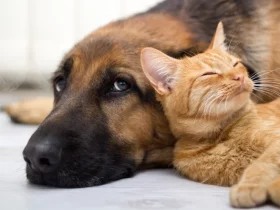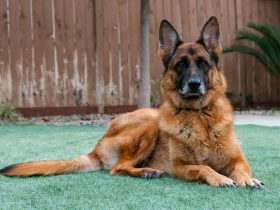Thousands of dogs give birth to litters of puppies every year with little or no difficulty. Occasionally, there are difficult deliveries, stillborn pups and Caesarian sections. With a little knowledge of the whelping process and possible difficulties, you will be in a better position to handle an emergency.
Puppies are usually born between the 61st and 65th day after conception, with the average time being 63 days. If your bitch goes beyond the 65th day without any signs of labor, consult your veterinarian.
Labor and whelping
Be on the alert for signs of labor during the last week of pregnancy. While 63 days is the average, the bitch can whelp sooner or later. A day or so before she is due, the bitch’s vulva will become enlarged. She will be uneasy and will spend a lot of time making a nest in the whelping box (if she’s taken a fancy to it). Keep an eye on her but let her alone. She’ll probably drink more water than usual and urinate more frequently during the last few days of her pregnancy. If she is constipated, do not give her any laxatives. Add more bulk to her diet, such as leafy vegetables.
About 24 hours before whelping, the bitch’s temperature will drop a degree or two. If you want to use this as a sign of approaching parturition, start taking her temperature twice a day during the last week. The bitch’s appetite will fall off and she will probably refuse food anywhere from 24 to 12 hours before whelping. Don’t try to make her eat; she knows what she’s about and what’s good for her. You can expect her to be very uneasy, fidgety; possibly shivering and trembling. A discharge from the vulva will herald the event.
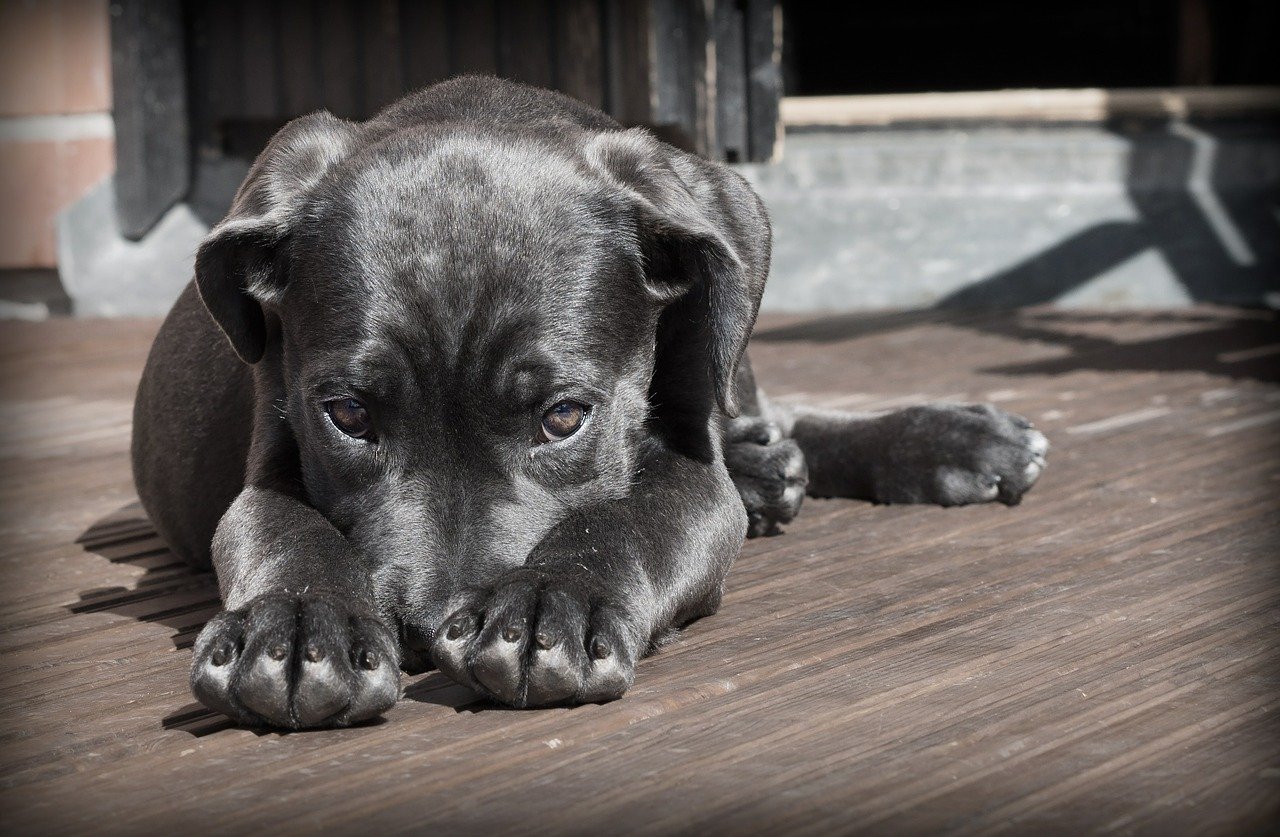
When all is normal, you can expect the first pup within 2 hours after the above-mentioned symptoms. Now, as to the important question: what should you do while the bitch is whelping? Our advice is for you to do nothing—unless the bitch is in difficulty or fails to perform certain functions, which we’ll mention. Too much attention and fussing will lead to confusion, possibly injury to the pups. Some nervous bitches have been known to kill or hide their pups because of too much human intervention. But while too much attention is not advised, you should not ignore or forget the bitch. Stay with her during the whelping and be ready to lend a hand if she needs it. Your presence will help reassure the bitch who may be whelping for the first time.
The bitch’s restlessness will build up as the moment nears and her anxiety increases. Then the first labor contractions start. These will be involuntary and very noticeable. During the contractions, the bitch will pant, move around in the whelping box or even leave the box to go get a drink of water. As the contractions become more frequent, the bitch will pant harder between contractions. Let her alone; this is normal.
The first pup should be born within 2 hours after the contractions speed up. If the first pup doesn’t emerge within 2 hours, give the bitch another hour of labor, and then if no pup appears, call the veterinarian.
In a normal delivery, a pup emerges headfirst. When a pup comes out feetfirst, it is a breech delivery. (Breech deliveries are not at all uncommon.) Each pup is born encased in a transparent sac or membrane. This sac or membrane will be the first thing you see as the pup is expelled. It will be bulgy and transparent and you will see the pup inside. The sac will be attached by a cord to the placenta, which should come out after the pup. The placenta or afterbirth is the means by which the fetus is nourished within the uterus.
If the sac breaks on the way out, quickly bring the pup to the bitch’s attention, if she hasn’t already gone to work on it. Ordinarily, the bitch will break the sac with her teeth and gnaw off the navel cord to within one inch of the pup’s navel. If the bitch doesn’t break the sac or chew off the navel cord, you will have to take care of these. Pick up the sac with the pup inside (use a clean cloth) and break the sac near the pup’s head. Do it by gently stretching the membrane or hooking a finger into it and carefully pulling it apart.
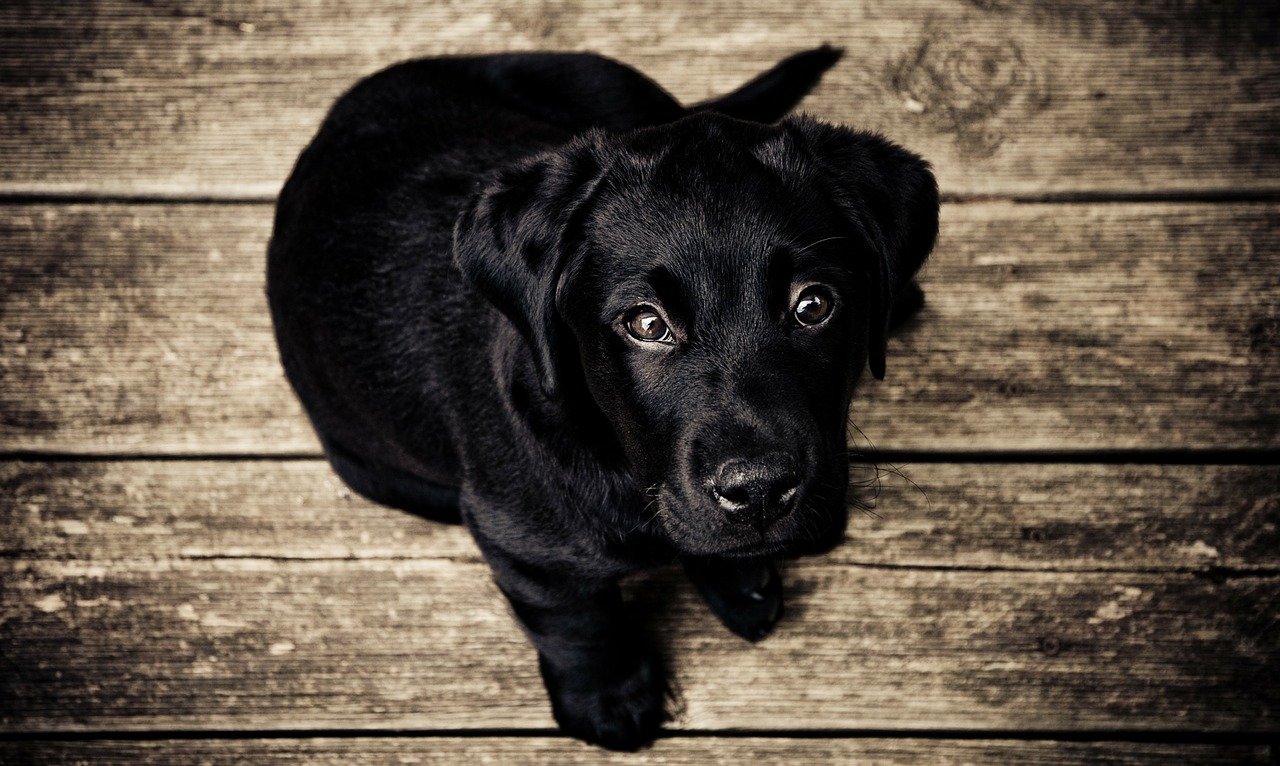
Next, put the pup down where the bitch can lick and clean it. It is imperative that the pup be cleaned. When the sac is broken, the pup should gasp for air. Breathing may be impeded because of mucous in the pup’s nose, throat or lungs. This mucous must be removed. If the bitch will not dean the pup or it doesn’t gasp for air, you will have to take over.
Quickly wipe any excess mucous from the pup’s mouth. Open the pup’s mouth, take a medicine dropper and suck out any mucous. Rub the pup vigorously with a clean, dry cloth, both with and against the lie of the hair. The rubbing will help to stimulate circulation.
If, after these administrations, the pup still doesn’t gasp for air, you’ll have to use more drastic measures. Wrap the pup in a clean cloth, hold it cupped in your two hands, with the head toward your fingers, and swing the pup downward in an arc in front of you. Stop the swing suddenly, but hold on to the pup. The centrifugal force plus the sudden stop usually clears out the mucous.
Another emergency measure to get the pup breathing is to use a rubber tube and syringe to withdraw the mucous. Insert the tube well into the pup’s mouth and squeeze the syringe to aspirate the mucous. Keep working on the pup and don’t let it get chilled. A hot water bottle wrapped in a cloth will provide heat.
Artificial respiration is not always practical. But you can insert the rubber tube in the pup’s mouth (take off the syringe) and try forcing your own breath down. When you try this, proceed as follows: breathe air into the tube, stop, then press gently on the pup’s ribs in the region of the lungs. Be careful, you can easily break the pup’s rib case. Keep working to make the pup breathe; don’t give up too quickly.
The placenta
New dog owners watching their bitch whelp for the first time are often alarmed or disgusted when the bitch eats the placenta or afterbirth. Eating the placenta is neither harmful nor abnormal. Various theories have been advanced as to why the bitch (or any animal) eats the placenta. Among them are that the bitch eats the placenta to clean up any evidence of whelping (this is important in the wild stage where predatory animals may scent the birth and attack the bitch and pups); and that the bitch eats the placenta to provide temporary nourishment, since she cannot leave the pups to forage for food. Regardless of the motive, your bitch may eat the placenta.
You should keep track of the placenta and the number of placenta should correspond with the number of pups born. Sometimes a placenta is retained. This happens when the cord between the placenta and fetal sac breaks, leaving the placenta inside the bitch. If the bitch doesn’t expel the placenta, you can gently pull it out. Take a clean cloth and carefully withdraw the placenta (the broken cord may be hanging out of the vulva and you can take hold of this). A retained placenta will interfere with the birth of the next pup and if left inside will decompose.
As labor continues
Subsequent pups may come rapidly or there may be 2 hours between each pup. Remain with the bitch. If she labors for more than 3 hours between pups, she may be in trouble. If she doesn’t deliver the next pup after 3 hours (or if there are more than 3 hours between each pup) call the veterinarian. He’ll want some information; to wit, when the first pup was born, how was it born (normal or breech delivery), how long the bitch labored with the first pup, how long the bitch has been laboring with the difficult pup, etc.
Some obstetric difficulties
There are various reasons why a bitch may have a difficult time in whelping. Some are due to physical conditions of the bitch herself, such as a weak pelvis, disease, etc. Others may be due to the conformation of the pups, such as a large head, large body—or two pups may arrive in the birth channel at the same time. Breech deliveries often cause difficulty, too.

Breech delivery
As we stated before, the breech pup comes feetfirst. Usually the head of a breech pup is large and the bitch has trouble in expelling the pup. You may have to help her. As she strains to deliver the pup, grasp the pup’s feet and part of the body, if possible, with a clean cloth. Gently pull the pup and only when the bitch strains. Be careful, you can easily injure the pup. If you are not getting anywhere, don’t delay; call the veterinarian.
Caesarian section
A Caesarian section is usually performed by cutting through the abdominal wall into the uterus and removing the pups through the opening. The technique was so-named because
Julius Caesar was supposed to have been delivered in this manner.
Caesarian sections are usually necessary when the pups are too large to be delivered in the normal way. It’s possible to tell before birth whether the pups are too large and a Caesarian section can be planned. Many times the operation is done after a bitch in labor gets into difficulty. After straining for hours, the uterine muscle simply loses its power. If your bitch labors for more than 6 hours without any results, get her to the veterinarian as soon as possible.
The newborn pups
When all of the pups are born, make sure that each one has a chance to nurse. Remember that newborn pups need the colostrum-milk to get immunity against disease. Place each pup on a teat, if they haven’t already found one. The bitch may become so absorbed in licking a pup or herself, that she may forget to nudge the pups toward the teats.
The navel cords
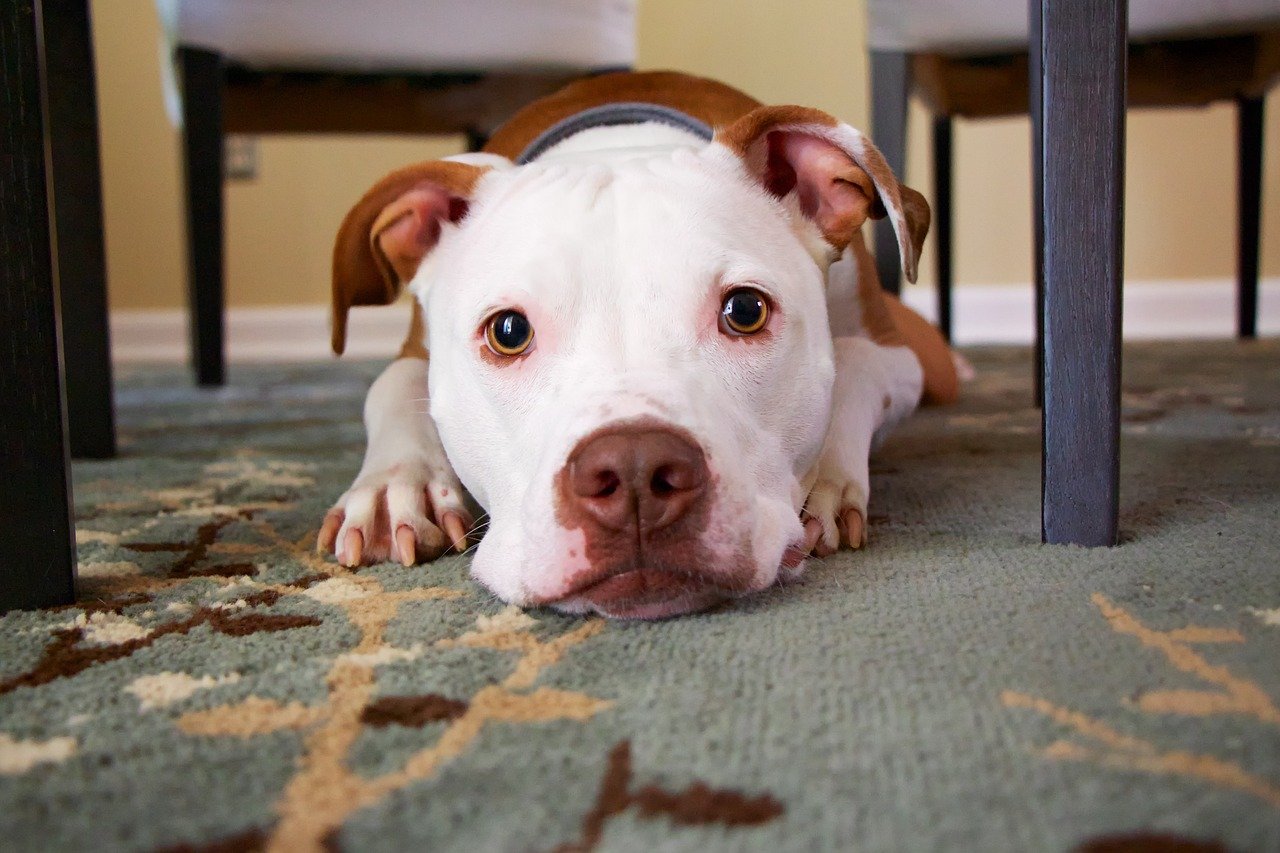
Under normal conditions, the bitch will chew off the navel cords. If she doesn’t, you can snip or break them. But do not cut them any closer than one inch from the navel. The navel cord stumps usually dry up and fall off in about 2 or 3 days. Once in a while, a cord breaks off too close to the pup’s navel and a small rupture ensues. The rupture may heal as the pup grows or it may have to be surgically repaired. As a precaution against navel infection, you can apply an antiseptic to each of the navel cord stumps. Tincture of iodine will be satisfactory.
Checking for an unborn pup
Just when you think that all the pups have been born, the bitch may go into labor again. She may be trying to expel another pup or a retained placenta. Let her alone and see what happens. If she works for more than an hour or two without any results, call the veterinarian. Sometimes you can feel an unborn pup on the underside of the bitch’s pelvis. More often you merely feel the swollen uterus.
When it’s all over
When you are satisfied that no more pups are due, let the bitch rest. She’s just been through a strenuous experience. She may want to go outdoors to relieve herself or she may not want to leave the pups. But let her make the move. If she does go outside, don’t leave her out too long. Later on, she’ll get back on her regular house-training schedule.
Next, clean up the whelping box, clear away the equipment and let the new mother take care of her pups. You might try her with some food; warm milk or warm milk and Pablum will be nourishing. Don’t be surprised if she refuses to eat. It will not be long before she is looking for her meal, especially when the pups start nursing in earnest.
The next few days
The bitch will have a discharge for the next week or ten days. If all went well during whelping, the discharge will be red or dark red in color. But a greenish discharge means trouble. A placenta or portion of a placenta probably has been retained. (You may have miscounted them in your excitement!) Serious infection can result from a retained placenta. This infection can cause the bitch’s milk to dry up and the bitch and pups may die. Don’t waste any time when you spot this greenish discharge; get her to the veterinarian or call him for instructions.
For the first few days, you will have to keep a close watch on the new pups. Make sure that each one is getting enough to eat. The rear teats usually hold the most milk, and the larger pups will shove the weaker ones aside to reach these well-filled teats. If the litter is a large one—over 8 pups—it will be necessary to feed the pups in shifts. Divide the litter into two groups and feed one group at a time, three or four times a day.
Some bitches can’t or will not nurse the pups. When this occurs, you have two alternatives: 1) find a foster mother; or 2) hand-rear the pups. Your veterinarian may be able to help you find a foster mother or perhaps the local humane society will help you out.
In using a foster mother, proceed cautiously. First, make sure she is in good health. Second, see that she has enough milk to feed the litter. And three, remove the natural mother when using the foster mother.
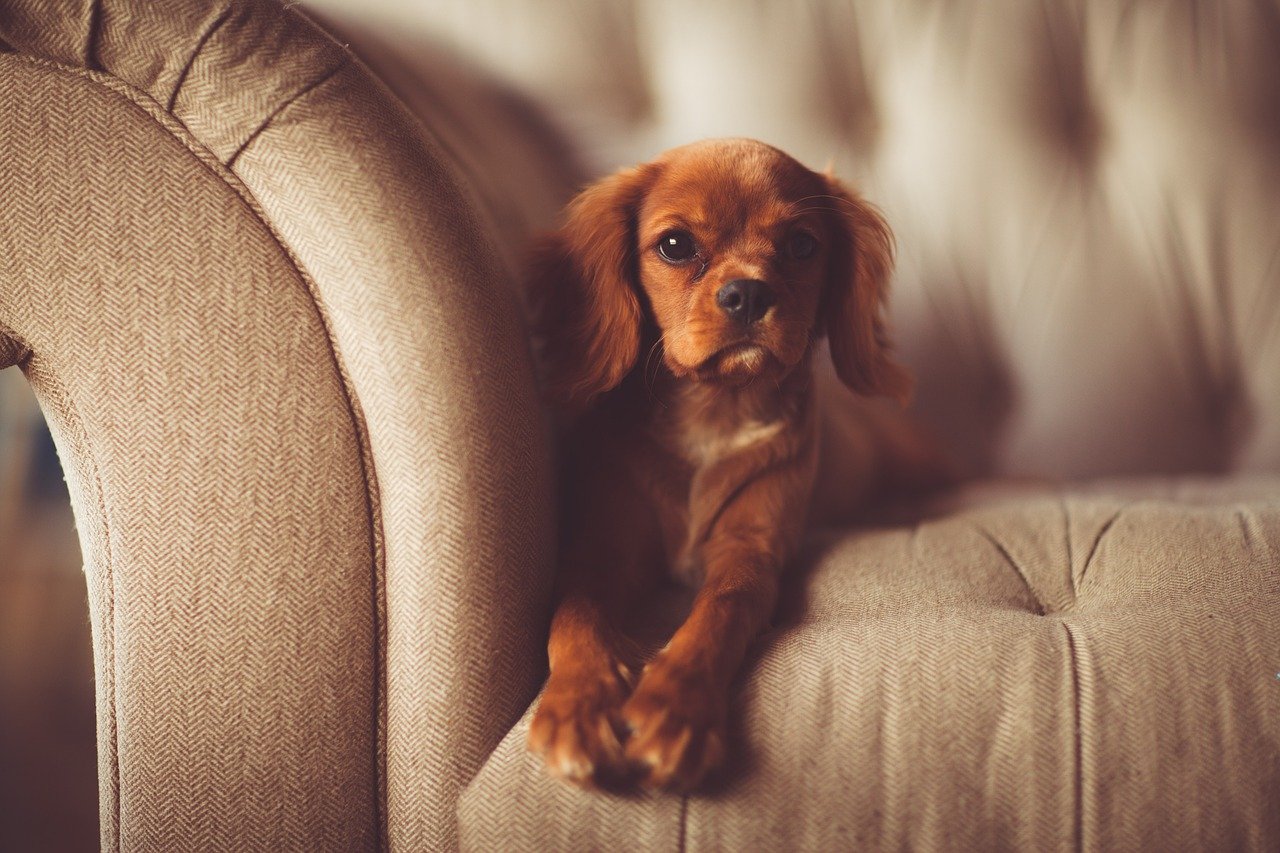
Many foster mothers will not allow strange pups to nurse. You’ll have to use some subterfuge. Squeeze out some milk from the foster mother (do this in another room) and rub it on each pup. This usually deludes a foster mother into thinking the pups are hers when she sniffs them and smells her own odor. Shepherds use this trick when they put an orphaned or rejected lamb on a foster mother. They go a bit further, though. Usually a ewe used as a foster mother has lost her own lamb. So, the shepherd will skin her dead lamb, tie the hide over an orphaned or rejected lamb, take some of the foster mother’s milk and smear it over the hide covering the lamb. It all sounds complicated, but it works.
Eclampsia
A serious condition known as eclampsia or milk fever may follow whelping. It affects nursing bitches. The depletion of blood calcium is suspected as a major cause. The condition is characterized by excessive panting, nervousness, restlessness, loss of appetite, a stilted walk, temperature above 103° and as high as 108°, collapse and convulsions. Don’t waste time—call the veterinarian. There is nothing you can do. The veterinarian will have to inject calcium into the bitch and it should be done as soon as possible.
Hand-rearing the pups
In the absence of a foster mother, you will have to hand-rear the pups. While this will take time and patience, it can be done successfully.
Feeding by hand
The pups can be raised on a formula fed with a bottle. In feeding newborn pups, it is necessary to approximate the bitch’s milk insofar as possible. Fortunately, a commercial formula, Esbilac, manufactured by the Borden Company, is available. It is a complete formula and just needs the addition of water. Esbilac can be purchased in most drugstores.
You’ll need the following equipment for feeding the pups: baby bottles, nipples, mixing bowl, measuring cup (graduated in ounces), a baby scale and some spoons. The nipples should have the holes made larger so that the formula will ooze out.
The feeding schedule
Contrary to what you may have read or heard, the pups do not have to be fed every 2 or 3 hours. Three times a day will be adequate. And as the pups grow, you can reduce the number of formula feedings. Here is a guide to feeding the formula:
- Birth to 3 weeks of age: 3 feedings per day.
- 3 to 5 weeks: 2 feedings per day. (With other food)
- After 5 weeks: you can cut out the formula or continue to feed it.
Start each pup on 14 ounce of the Esbilac formula per feeding the first day. Increase the amount gradually, so that by the 4th or 5th day, each pup is getting 2 ounce of the formula per feeding each day. Weigh the pups daily to keep a check on their progress. Also, keep an eye on the feces. If any of the pups has diarrhea, reduce the solid part of the formula; that is, add more water to the mix. You can reduce the solid part of the formula mix by as much as one-half. When the diarrhea is cleared up, gradually increase the solids.
Sanitation
Proper sanitation is important for the health of the pups. Wash your hands before mixing the formula or handling the pups. After feeding the pups, wash all bottles, nipples, pans, etc., in hot water and detergent; then rinse them in hot water. Esbilac is perishable and must be kept under refrigeration. Heat the formula to 100°F. before feeding to the pups.
Introducing solid foods
The pups—regardless of whether they are hand-fed, nursed on a foster mother or fed by their natural mother—can be given solid food when they are 2 to 3 weeks old. Start weaning them on Pablum and milk, with some finely chopped or ground beef mixed in. Introduce all new foods gradually. After 5 weeks, you can eliminate Pablum and the formula and gradually substitute a high-quality puppy meal supplemented with chopped meat and cottage cheese.
General care of the pups
The bitch will usually take care of the newborn pup’s immediate needs, such as stimulating him to evacuate and then cleaning up afterwards. If she doesn’t do it—or in the absence of a mother—you will have to perform these functions. Dip some absorbent cotton into warm water and massage the pup’s abdomen. This will stimulate the pup to have a movement. Wipe the pup clean after the bowel movement.
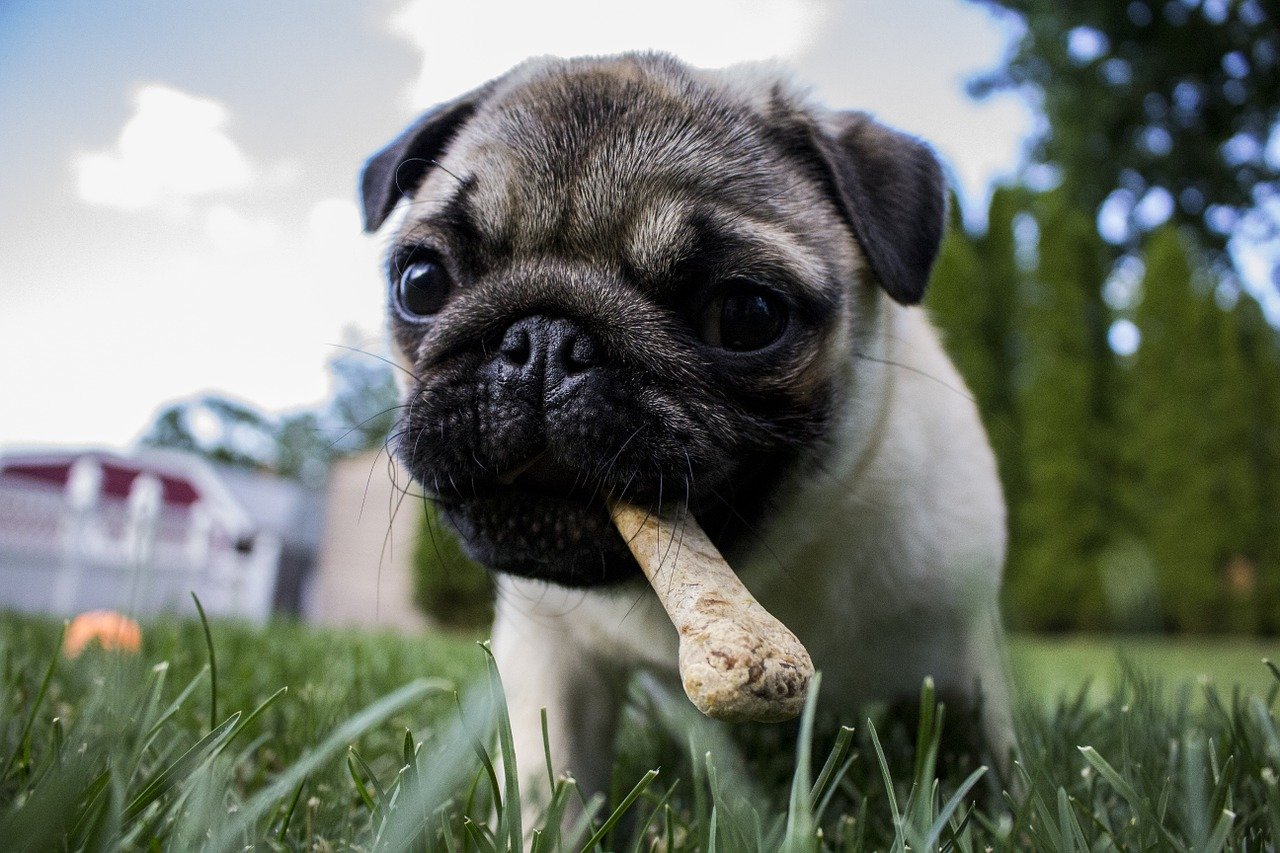
Grooming the very young pups should be kept to a minimum. Wash any soiled eyes with warm water or boric-acid solution. Trim any sharp nails. You can rub baby oil on the pups’ bodies once or twice a week. But, in general, don’t fuss with the pups; it’s more important for them to eat and sleep.
Pups reared without access to colostrum-milk will be protected about one week against distemper. This immunity is passed to them while they were in the uterus. Pups receiving colostrum-milk will be immune for a longer period, of course. Therefore, it’s important that the hand-reared pups receive a live-virus distemper injection at two weeks of age.
A final note of caution: the bitch will be very protective about her pups. Very small children and strangers should not be allowed to come too close to the bitch and pups. The instinct to protect her pups is very powerful and she may misinterpret a move and attack a child or stranger. And she’ll do this even though she and the children have been great friends. So, use good judgment; keep the children and strangers away —at least until the bitch shows that she doesn’t mind having spectators.



